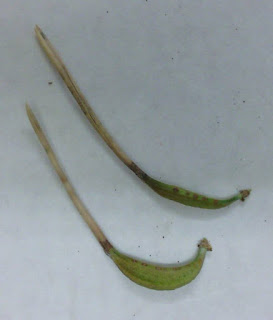Don't forget to check out the NMSU Plant Diagnostic Clinic Webpage for more resources on pest identification and pest management.
 |
| Header from the NMSU Plant Diagnostic Clinic Blog |
 |
| Header from the NMSU Plant Diagnostic Clinic Blog |
 |
| Nutsedge in the landscape (Photo: Leslie Beck, NMSU) |
 |
| Nutsedge in a lawn (Photo: Leslie Beck, NMSU) |
 |
| Nutsedge in a landscape planter (Photo: Leslie Beck, NMSU) |
 |
| Nutsedge flowers (Photo: Leslie Beck, NMSU) |
 |
| Nutsedge tuber (Photo: Leslie Beck, NMSU) |
 |
| Triangular-shaped stem of a nutsedge (Photo: Leslie Beck, NMSU) |
 |
| Herbicide injury on sycamore (Photo: NMSU- PDC) |
 |
| Hervicide injury on mulberry (Photo: NMSU-PDC) |
 |
| Herbicide injury on ash (Photo: NMSU-PDC) |
 |
| Flea beetle on Guara (Photo: NMSU-PDC) |
 |
| Flea beetles and feeding damage on Guara (Photo: NMSU-PDC) |
 |
| Adult flea beetle (notice the large, muscular, hind legs) (Photo: NMSU-PDC) |
 |
| Alfalfa infested with whitefringed beetle (Photo: NMSU-PDC) |
 |
| Whitefringed beetle larvae in alfalfa roots (Photo: NMSU-PDC) |
 |
| Alfalfa infested with whitefringed beetle (Photo: NMSU-PDC) |
 |
| Grasshopper on Guara stem (Photo: NMSU-PDC) |
 |
| Feeding damage on basil caused by grasshoppers (Photo: NMSU-PDC) |
 |
| Grasshopper and feeding damage on an orchid (Photo: NMSU-PDC) |
 |
| Early blight (Photo: NMSU-PDC) |
 |
| Phoma rot (Photo: NMSU-PDC) |
 |
| Pycnidia and spores of Phoma destructiva, the causal agent of Phoma rot (Photo: NMSU-PDC) |
 |
| Spores of Alternaria solani, the causal agent of early blight (Photo: NMSU-PDC) |
 |
| Galls on pinyon needles caused by pinyon spindle gall midge (Photo: NMSU-PDC) |
 |
| Larva of a pinyon spindle gall midge in a pinyon needle (Photo: NMSU-PDC) |
 |
| Black medic (Photo: NMSU-PDC) |
 |
| Black medic in a lawn (Photo: NMSU-PDC) |
 |
| Close-up of black medic (Photo: NMSU-PDC) |
 |
| Bermuda grass infected with Aceria cynodoniensis (stunt mite) (Photo: NMSU - PDC) |
 |
| Bermuda grass stunt mite, Aceria cynodoniensis (Photo: NMSU-PDC) |
 |
| Sclerotinia stem rot on sweet basil (Photo: NMSU - PDC) |
 |
| Stem lesion caused by Sclerotinia sclerotiorum (Photo: NMSU-PDC) |
 |
| Sclerotinia sclerotiorum in culture (Photo: NMSU - PDC) |
 |
| Iron chlorosis on a sweetgum leaf (Photo: NMSU-PDC) |
 |
| Iron chlorosis on Photinia shrub> (Photo: NMSU-PDC) |
 |
| Iron chlorosis on a Bradford pear tree (Photo: NMSU-PDC) |
 |
| Dieback on Bradford pear caused by iron deficiency (Photo: NMSU-PDC) |
 |
| Penstemon infected with root-knot nematode (Photo: NMSU-PDC) |
 |
| Galls on roots caused by root-knot nematode (Photo: NMSU-PDC) |
 |
| Apricot fruit with powdery mildew (Photo: NMSU-PDC) |
 |
| Spores of powdery mildew on apricot (Photo: NMSU- PDC) |